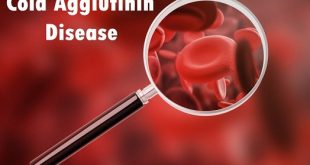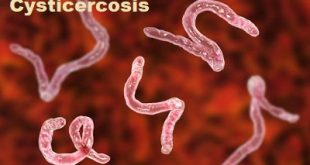Overview Cold agglutinin disease is a form of autoimmune hemolytic anemia caused by cold-reacting autoantibodies (a type of protein produced by the immune system). Primary cold agglutinin disease is usually associated with monoclonal (produced from a single ancestral cell by repeated cellular replication) cold-reacting autoantibodies. Primary cold agglutinin disease is chronic …
Read More »Childhood Obesity – Risk Factors, Complications, and Prevention
Overview Childhood obesity is a complex disease that can occur when your child is above a healthy weight for their age and height. The medical definition of childhood obesity is having a body mass index (BMI) at or above the 95th percentile on the Centers for Disease Control and Prevention’s …
Read More »Cysticercosis – Transmission, Diagnosis, and Prevention
What is Cysticercosis? Cysticercosis is a parasitic tissue infection caused by larval cysts of the tapeworm Taenia solium. These larval cysts infect brain, muscle, or other tissue, and are a major cause of adult-onset seizures in most low-income countries. A person gets cysticercosis by swallowing eggs found in the feces of …
Read More »Colorado Tick Fever – Causes, Risk, and Treatment
What is Colorado Tick Fever? Colorado tick fever (CTF), also known as Mountain tick fever or American mountain fever, is a viral disease caused by infection with the Colorado tick fever virus (CTFV), a member of the Coltivirus genera. CTF is transmitted to humans most commonly by the bite of …
Read More »Cercarial Dermatitis or Swimmer’s Itch – Risk and Causes
What is Cercarial Dermatitis? Cercarial dermatitis, also known as swimmer’s itch, is an itchy rash caused by a tiny parasitic worm. It’s contracted by swimming or wading in infested fresh water lakes or ponds. The parasite’s usual hosts are waterfowl and rodents. After the parasite is excreted from the waterfowl …
Read More »Carbon Monoxide Poisoning – Description and Prevention
Description Carbon monoxide poisoning occurs when carbon monoxide builds up in your bloodstream. When too much carbon monoxide is in the air, your body replaces the oxygen in your red blood cells with carbon monoxide. This can lead to serious tissue damage, or even death. Carbon monoxide is a colorless, …
Read More »Catatonia – Classification, Symptoms and Treatment
Definition Catatonia is a syndrome characterized by psychomotor abnormalities, often presenting as a state of apparent unresponsiveness to external stimuli or inability to move normally in a person who is awake. Classically associated with schizophrenia, but may also present in bipolar, PTSD, autism, encephalitis, and other neurologic disorders. If left …
Read More »Cyanosis – Types, Pathophysiology, Symptoms and Causes
Definition Cyanosis is the medical term for a bluish color of the skin and the mucous membranes due to an insufficient level of oxygen in the blood. For example, the lips and fingernails may show cyanosis. Cyanosis can be evident at birth due to the presence of a heart malformation …
Read More » Diseases Treatments Dictionary This is complete solution to read all diseases treatments Which covers Prevention, Causes, Symptoms, Medical Terms, Drugs, Prescription, Natural Remedies with cures and Treatments. Most of the common diseases were listed in names, split with categories.
Diseases Treatments Dictionary This is complete solution to read all diseases treatments Which covers Prevention, Causes, Symptoms, Medical Terms, Drugs, Prescription, Natural Remedies with cures and Treatments. Most of the common diseases were listed in names, split with categories.








